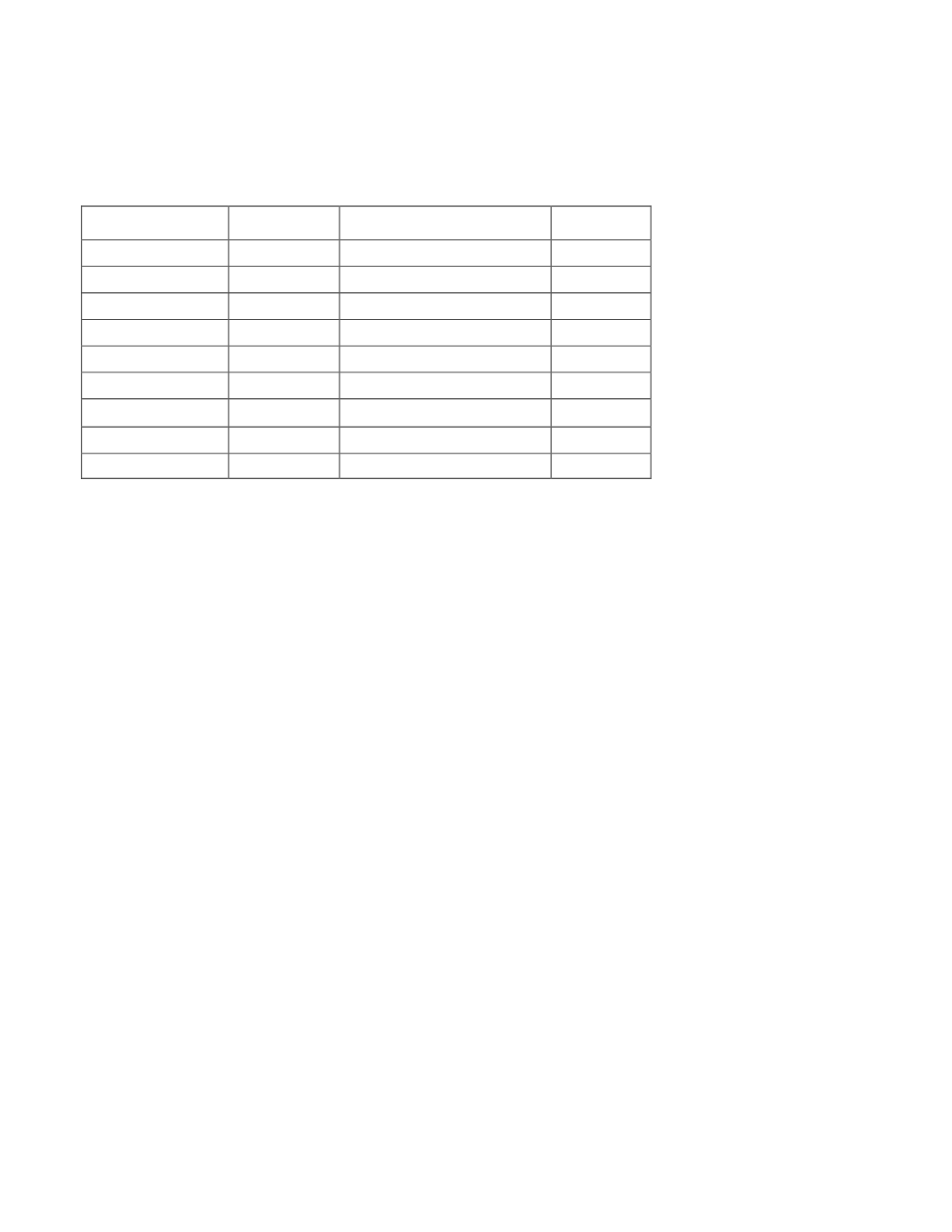

Ref. No. [UMCES] CBL 2016-010
ACT VS16-01
39
Table 6.
Summary of regression statistics for the AroW-USB versus reference sample response curves for each
of the nine laboratory trials.
Test ID
R2
y Intercept
Slope
LT15S00*
0.996
-0.188
1.001
LT15S10
0.999
-0.226
1.021
LT15S35
0.995
-0.510
1.066
LT04S00
1.000
-0.280
1.021
LT04S10*
0.980
0.154
0.916
LT04S35
0.997
-0.274
1.050
LT30S00
0.997
-0.274
1.050
LT30S10
0.997
-0.313
1.093
LT30S35
1.000
-0.134
1.053
* Bubble contamination data excluded.
Results of the 56 day long-term stability and thermal stress challenge for the AroW-USB are
shown in figure W. The instrument was maintained in a well circulated tank and oxygen content
manipulated by alternately varying water temperature set point between 15 and 25
o
C several times per
week of deployment. The data completion result for the stability test was 100%. The time series of
instrument readings at 15min intervals is plotted against discrete values for Winkler reference samples
(
top panel
) along with the time series of the difference between instrument and reference
measurements (
bottom panel
). The overall mean difference between measurements was -0.154 (s.d. =
0.319) mg/L. There was a minor drift in instrument accuracy over the deployment (slope = -0.006
mg/L/d; r
2
=0.17) but the goodness of fit was low due to several outliers.
Results for the functional sensor response time assessment of the AroW-USB are shown in
figure X. The top panel depicts the time series of 10s instrument reads during transfers between
adjacent high (9.6 mg/L) and low (2.0 mg/L) DO water baths, maintained commonly at 15
o
C. The
bottom panel (
lower left
) depicts results fit with a 3 parameter exponential decay function: DO
rel
=
DO
relMin
+ a
e
-bt
and indicated τ calculated from fit. Data for low DO to high DO transitions (
lower
right
) were treated similarly but normalized to steady state value in subsequent high DO tank and
subsequently fit with an analogous 3 parameter exponential rise function: DO
rel
= DO
relMin
+ a(1-
e
-bt
)
with indicated τ being directly calculated from fit. The calculated τ
90
was 209 s during high to low
transitions and 284 s for low to high transitions covering a DO range of approximately 8 mg/L at a
constant 15
o
C.
















